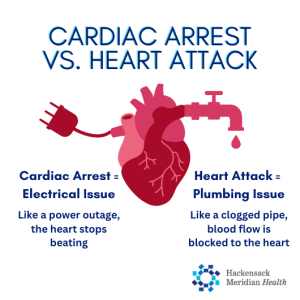A sudden cardiac arrest (SCA) is a life-threatening emergency that can happen without warning. It causes the heart to stop beating properly, cutting off blood flow to the brain and other vital organs. Unless immediate action is taken, the person will die within minutes.
Understanding sudden cardiac arrest, its warning signs, and how to respond can save lives. With public defibrillators becoming more accessible across the UK, there is hope in every second.
What Causes Sudden Cardiac Arrest?
A sudden cardiac arrest is caused by an electrical malfunction in the heart. The heart relies on electrical signals to beat in a c
oordinated way. When som
ething goes wrong, the rhy
thm becomes erratic or
stops completely. This is known as an arrhythmia.
The most common arrhythmia leading to cardiac arrest is ventricular fibrillation, where the lower chambers of the heart
quiver instead of pumping blood. Without blood circulation, the person loses consciousness within seconds.
SCA is different from a heart attack. However, a heart attack can trigger a sudden cardiac arrest.
Sudden Cardiac Arrest vs Heart Attack
Many people confuse sudden cardiac arrest with a heart attack, but they are not the same condition.
-
A heart attack is a circulation
-
problem. It happens when a blockage prevents blood from reaching part of the heart muscle. This is often caused by a blood clot or a build-up of fat and cholesterol in the arteries.
-
A sudden cardiac arrest is an electrical problem. It causes the heart to stop beating effectively and results in a loss of blood flow throughout the body.
It is possible to survive a heart attack i
f treated quickly. A cardiac arrest, on the other hand, requires immediate CPR and defibrillation to have any chance of survival.
For a detailed explanation, visit our article on the difference between a heart attack and a cardiac arrest.
What Are the Signs of a Sudden Cardiac Arrest?
Sudden cardiac arrest often occurs with no warning. When it does give signs, they may be subtle and easy to overlook. These can include:
-
Chest discomfort or pain
-
Shortness of breath
-
Dizziness or light-headedness
-
Unexplained fainting or near fainting
-
Rapid or irregular heartbeat
When cardiac arrest occurs, the person will:
-
Collapse suddenly
-
Stop breathing or gasp occasionally
-
Lose consciousness
-
Have no pulse
In these moments, the heart has stopped functioning. Every second counts.
What to Do in a Sudden Cardiac Arrest Emergency
If you suspect someone is having a cardiac arrest, follow these steps immediately:
-
Call 999– Ask for an ambulance.
-
Begin CPR– Push hard and fast in the centre of the chest at a rate of 100 to 120 compressions per minute.
-
Use a defibrillator– If an automated external defibrillator (AED) is available, turn it on and follow the voice prompts.
You do not need training to use an AED. The device will guide you and will only deliver a shock if needed. Using a defibrillator alongside CPR can double or triple the person’s chance of survival.
Who Is at Risk of Sudden Cardiac Arrest?
Sudden cardiac arrest can strike anyone, at any age, even without any known heart conditions. However, certain factors increase the risk:
-
Coronary heart disease
-
Previous heart attacks
-
Inherited heart rhythm disorders
-
Heart failure or cardiomyopathy
-
Drug or alcohol misuse
-
Sudden trauma or physical stress
-
Electrocution or drowning
Athletes and young people may also be at risk, particularly if an underlying genetic condition has gone undetected.
How Common Is Sudden Cardiac Arrest in the UK?
Each year, around 30,000 out-of-hospital cardiac arrests occur in the UK. According to the NHS, the survival rate is currently less than 1 in 10. However, early defibrillation can significantly increase these odds.
Public access to defibrillators is vital. Many people do not realise how easy it is to install a defibrillator at your workplace or community space.
Why Defibrillators Matter
A defibrillator works by delivering a controlled electric shock to the heart to restore a normal rhythm. It is the only effective treatment for most sudden cardiac arrests.
Without defibrillation, the chance of survival drops by about 10 percent for every minute that passes. After ten minutes, survival is unlikely. That is why having an AED close by, and knowing how to use it, is so important.
Explore our range of fully automatic defibrillators and semi-automatic defibrillators to find the right device for your setting.
Creating a Heart Safe Environment
At Defib Supplies, we help organisations of all sizes become part of a growing network of Heart Safe Locations. From dental practices and golf clubs to schools and offices, we support those taking lifesaving steps in their communities.
To see how other organisations have taken action, visit our Heart Safe Location blogs.
If you have recently installed a defibrillator, get in touch with us to be featured.
Final Thoughts
A sudden cardiac arrest is not something anyone can predict. But preparation can mean the difference between life and death. Whether it happens in a workplace, at home, or in a public space, a quick response can save a life.
Understanding what a cardiac arrest is, how it differs from a heart attack, and how to respond could make you the reason someone survives.
If you are ready to protect your team or community, speak to us today about installing a defibrillator. We are here to help.



